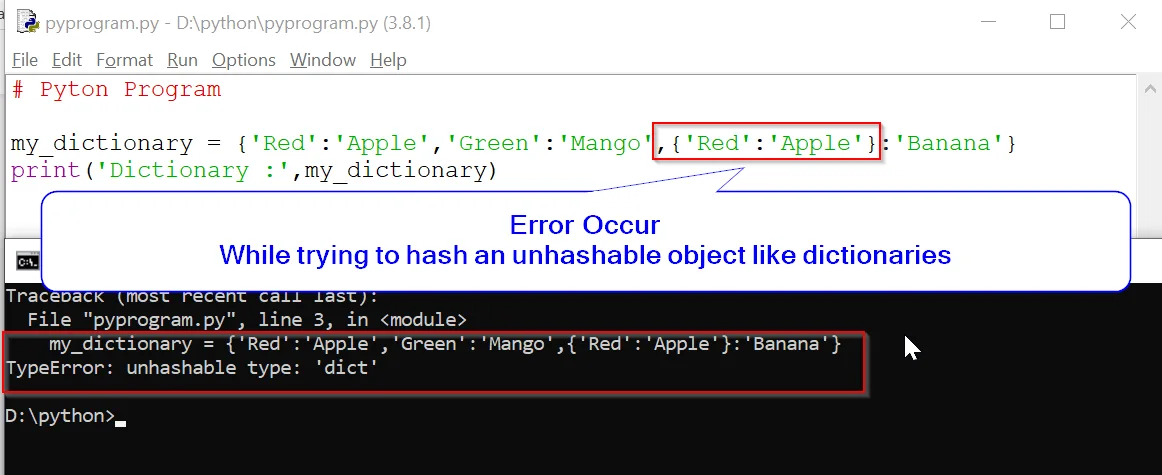Hash Meaning In Python
In python the dictionary data types represent the implementation of hash tables.
Hash meaning in python. The are generated by hashing function which generates unique result for each unique value supplied to the hash function. Hash tables offer a combination of efficient lookup insert and delete operations. Different versions of python are free to change the underlying hash function so you will likely get a different value.
In programming the hash method is used to return integer values that are used to compare dictionary keys using a dictionary look up feature. Python stands out as a language to implement much of the good sects of this. Hash values are just integers that are used to compare dictionary keys during a dictionary lookup quickly.
Hashing is a one way function lossy and is not an encryption scheme. Even though you can compute a hash using a file this does not mean you cannot get the original file back using this hash. Internally hash method calls hash method of an object which is set by default for any object.
Returns the hashed value if possible. Hash tables are used to implement map and set data structures in many common programming languages such as c java and python. The object which we need to convert into hash.
Since the default python hash implementation works by overriding the hash method we can create our own hash method for our custom objects by overriding hash provided that the relevant attributes are immutable. Let s create a class student now. Hash method in python is a module that is used to return the hash value of an object.
The keys of the dictionary are hashable i e. Supported hashing algorithms in python. Import hashlib encode it to bytes using utf 8 encoding message some text to hash encode we gonna use different hash algorithms on this message string starting with md5.
